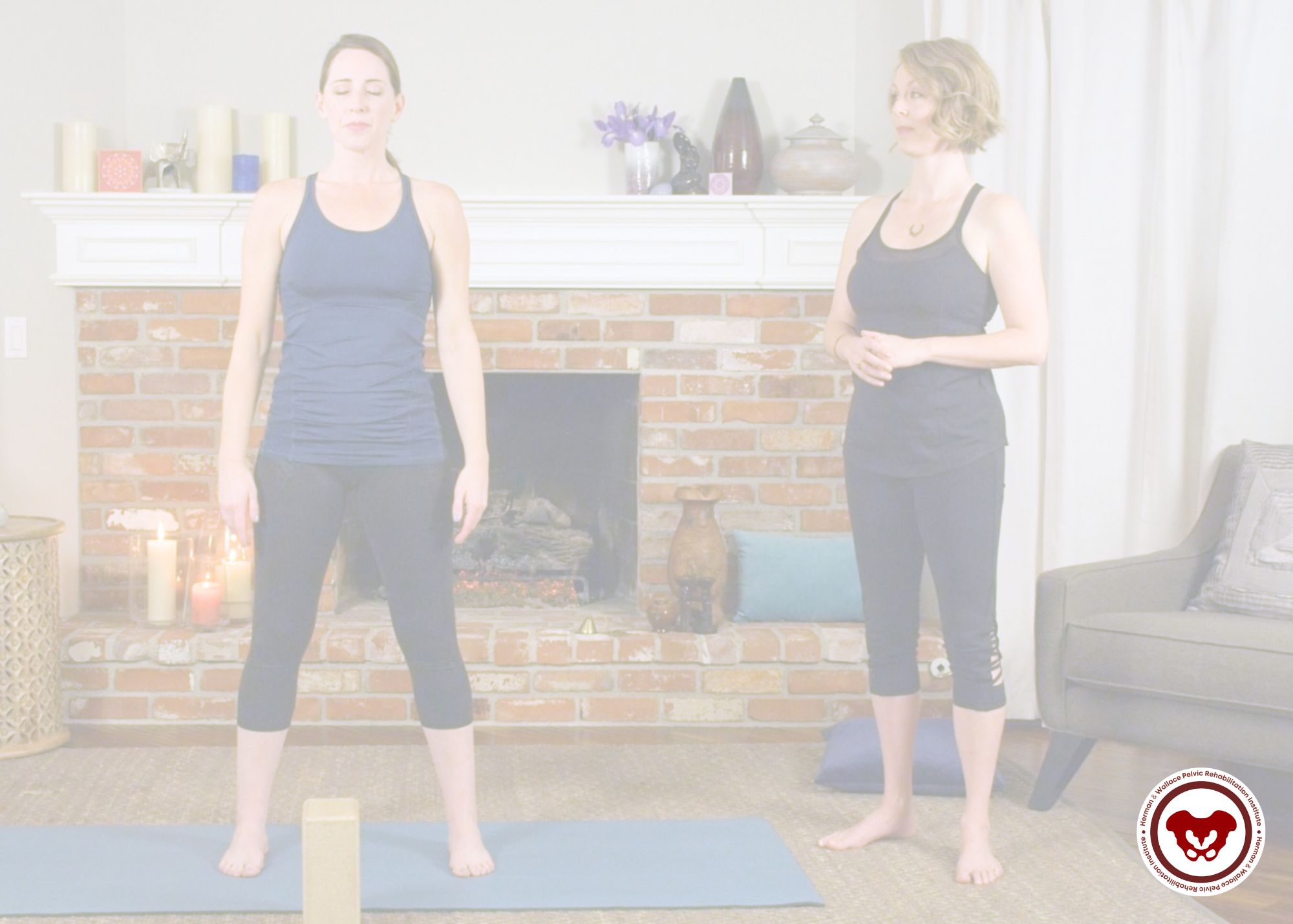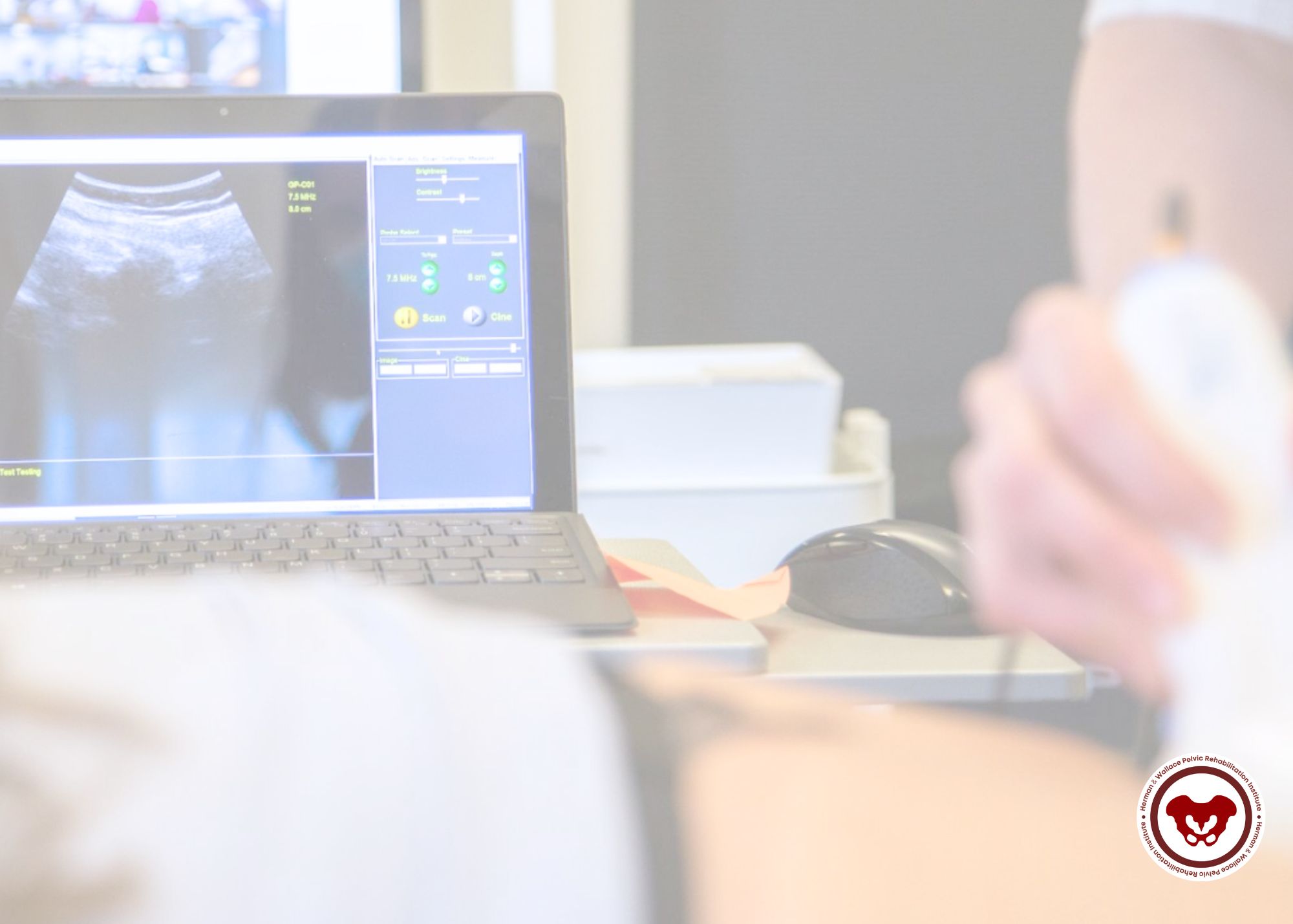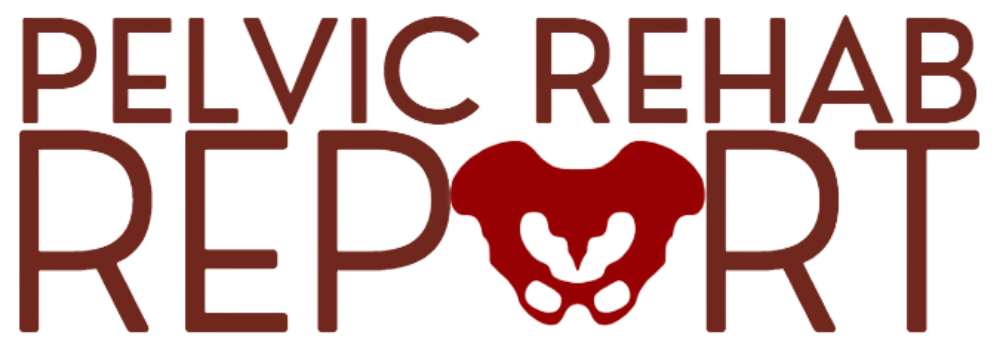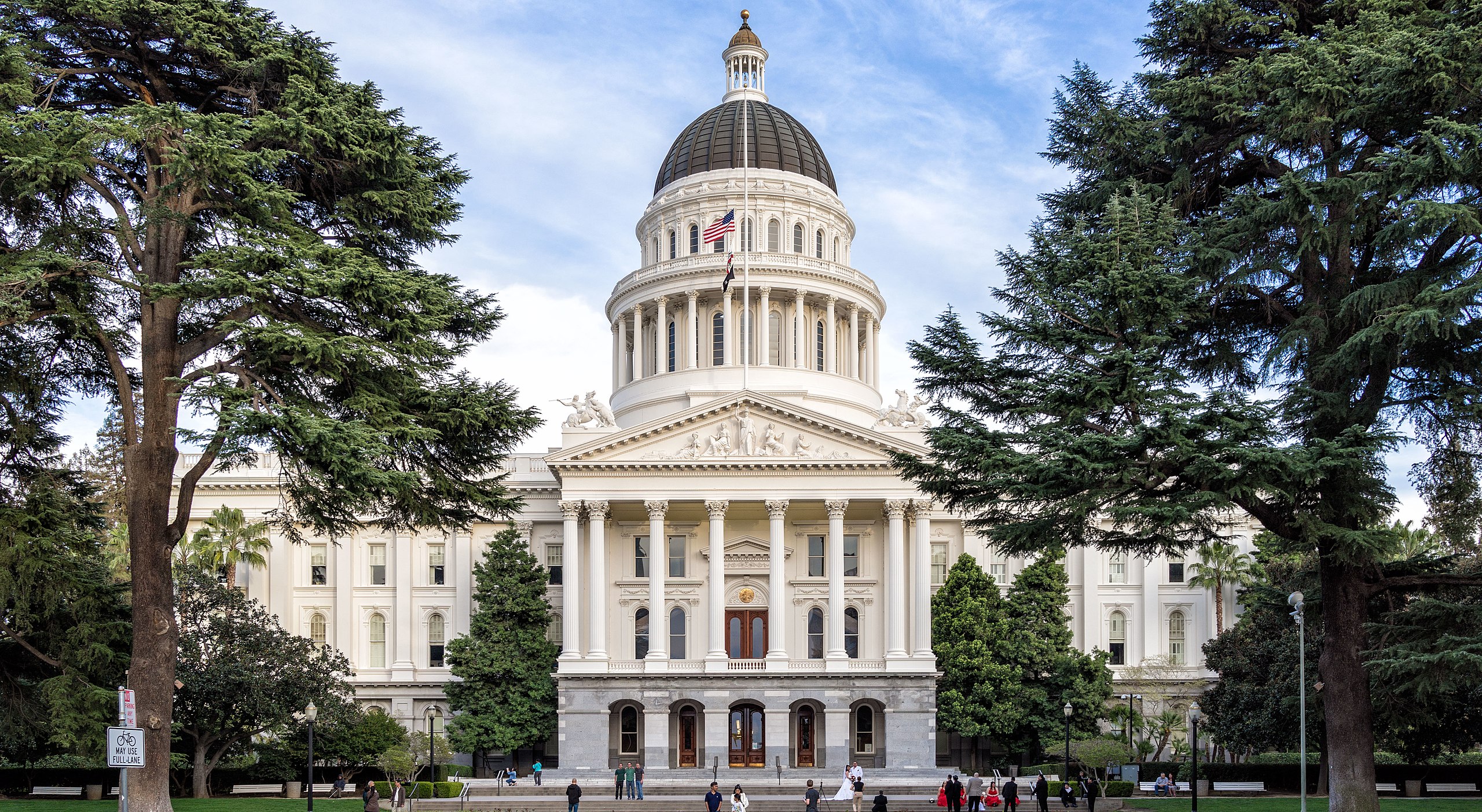
Over the last few years, a growing body of studies has expanded our understanding of male pelvic floor dysfunction and refined the approach to treatment within pelvic rehabilitation. The latest evidence supports a multifaceted, neuro-muscular strategy grounded in early intervention, individualized care, and integration of tools like electrical stimulation and manual therapy. Below, are a few key findings that are reshaping clinical protocols and outcomes in male pelvic rehab.
Post-Prostatectomy Urinary Incontinence
Pelvic floor muscle training (PFMT) remains the first-line therapy for post-prostatectomy incontinence (PPI). A 2022 meta-analysis by Park et al, involving 21 randomized controlled trials, found that PFMT nearly tripled continence rates compared to no PFMT. Patients also showed significant improvements in both objective measures (e.g., pad counts) and subjective continence scores.
While long-term benefits are well established, recent research emphasizes the importance of early initiation. Multiple studies support beginning PFMT preoperatively or immediately postoperatively to optimize outcomes, particularly after nerve-sparing robotic-assisted radical prostatectomy. Timed, progressive PFMT, especially when started early, is essential for maximizing continence recovery, even more so in cases involving nerve-sparing approaches that may affect pelvic floor coordination.
Combining PFMT with Electrical Stimulation
A 2025 meta-analysis by Lunardi et al examined 885 female patients and found that pelvic floor muscle training (PFMT) combined with electrical stimulation significantly outperformed PFMT alone in improving continence, pelvic floor strength, and quality of life. However, these findings are limited to women and do not directly translate to male populations.
In contrast, evidence in male patients, particularly those with post-prostatectomy incontinence, is more mixed. A randomized, placebo-controlled trial by Yamanishi et al. in 2010 that involved 56 men found that PFMT combined with anal electrical stimulation significantly improved continence rates during the early recovery period (1–6 months) compared to “sham” stimulation. However, by 12 months, the difference between groups was no longer statistically significant, suggesting that the benefits may be short-term.
While adjunctive electrical stimulation appears to provide early benefit in some men, especially those with severe leakage or poor initial voluntary contraction, the long-term advantage remains uncertain. Patients with limited neuromuscular control may benefit from neuromuscular electrical stimulation (NMES) to enhance recruitment and early adherence, but expectations should be managed regarding sustained continence outcomes beyond the first 6–12 months.
Pelvic Floor Therapy for Sexual Dysfunction
Emerging literature from Pastore et al. (2021) supports pelvic rehab in the management of erectile dysfunction, premature ejaculation, and chronic prostatitis/chronic pelvic pain syndrome (CP/CPPS). Integration of manual therapy, PFMT, and behavioral retraining has yielded meaningful gains in function and reduction in nociceptive signaling.
A 2024 study utilizing High-Intensity Focused Electromagnetic (HIFEM) therapy further points to new frontiers in non-invasive intervention for erectile dysfunction and male urinary control.
These findings highlight the evolving role of pelvic floor therapy as a cornerstone in the multidisciplinary management of male sexual dysfunction. Whether through traditional rehabilitation approaches—such as PFMT, manual therapy, and behavioral retraining—or through emerging technologies like HIFEM, pelvic health interventions demonstrate tangible benefits in improving sexual function, alleviating pelvic pain, and restoring urinary control.
Clinical Patterns Worth Noting
In clinical practice, several common patterns emerge when treating male pelvic floor dysfunction. Patients with chronic pelvic pain frequently present with pelvic floor overactivity, often accompanied by restrictions in the obturator internus, adductor magnus, and piriformis muscles. This hypertonicity is commonly associated with neural sensitization and can be exacerbated by postural imbalances or stress-related bracing strategies.
Men recovering from prostatectomy may exhibit compensatory recruitment of accessory muscles, such as the gluteal and abdominal muscles, due to impaired pelvic floor motor control. This can reduce the effectiveness of voluntary pelvic floor muscle contractions and contribute to persistent urinary leakage despite exercise adherence. Thorough neuromuscular re-education is often required to facilitate isolated pelvic floor activation and restore continence.
Erectile dysfunction in this population is frequently compounded by contributing factors such as pelvic asymmetry, altered respiratory diaphragm coordination, and increased thoracolumbar tension. These findings emphasize the importance of a whole-body biomechanical and neuro-myofascial assessment, as pelvic floor dysfunction in men rarely presents in isolation. Recognizing and addressing these interrelated impairments is key to achieving lasting functional outcomes.
August Satellite Lab: Pelvic Function Level 2C
Herman & Wallace invites you to refine your clinical reasoning and hands-on skills at the upcoming Pelvic Function Level 2C Satellite Lab Course, held August 16–17.
This intermediate-level course emphasizes:
- Recognizing the key signs and symptoms that lead to impairment, functional limitations, and disabilities in men’s health
- Use of an evaluation/outcome tool relating to patient condition(s)
- Designing a multi-modal plan of care for pelvic rehabilitation
- Performing clinical interventions based on the patient's presentation and goals
Clinical treatment interventions include patient education, neuro re-education, therapeutic exercise, manual therapy, therapeutic activities, instruction in self-care, and recommendations for relevant modalities.
It’s essential that pelvic rehabilitation continues to evolve beyond the historically female-centered framework to address the full spectrum of pelvic dysfunction, including the complex needs of male patients. Evidence indicates that targeted, neuromuscular-driven rehabilitation strategies can significantly improve outcomes for men experiencing urinary, sexual, and pain-related pelvic conditions.
The August course is available in 9 different satellite locations as well as self-hosted. Satellite locations for Pelvic Function Level 2C: Men’s Pelvic Health and Rehabilitation include:
-
 Columbus OH
Columbus OH - Danvers MA
- Katy TX
- Milwaukee WI
- New Orleans LA
- New York NY
- Palm Beach FL
- Paso Robles CA
- Tacoma WA
- Self-Hosted
References
- Park JJ, Kwon A, Park JY, Shim SR, Kim JH. Efficacy of Pelvic Floor Exercise for Post-prostatectomy Incontinence: Systematic Review and Meta-analysis. 2022 Oct;168:175-182. doi: 10.1016/j.urology.2022.04.023. Epub 2022 May 5. PMID: 35526757. https://pubmed.ncbi.nlm.nih.gov/35526757/
- Lunardi AC, Foltran GC, Carro DF, Silveira LTY, Haddad JM, Ferreira EAG. Efficacy of electrical stimulation in comparison to active training of pelvic floor muscles on stress urinary incontinence symptoms in women: a systematic review with meta-analysis. Disabil Rehabil. 2025 Jun;47(13):3256-3267. doi: 10.1080/09638288.2024.2419424. Epub 2024 Oct 28. PMID: 39467254. https://pubmed.ncbi.nlm.nih.gov/39467254/
- Yamanishi T, Mizuno T, Watanabe M, Honda M, Yoshida K. Randomized, placebo-controlled study of electrical stimulation with pelvic floor muscle training for severe urinary incontinence after radical prostatectomy. J Urol. 2010 Nov;184(5):2007-12. doi: 10.1016/j.juro.2010.06.103. Epub 2010 Sep 20. PMID: 20850831. https://pubmed.ncbi.nlm.nih.gov/20850831/
- Pastore AL, Palleschi G, Fuschi A, Maggioni C, Rago R, Zucchi A, Costantini E, Carbone A. Pelvic floor muscle rehabilitation for patients with lifelong premature ejaculation: a novel therapeutic approach. Ther Adv Urol. 2014 Jun;6(3):83-8. doi: 10.1177/1756287214523329. PMID: 24883105; PMCID: PMC4003840. https://pmc.ncbi.nlm.nih.gov/articles/PMC4003840/
- Yaacov D, Nelinger G, Kalichman L. The Effect of Pelvic Floor Rehabilitation on Males with Sexual Dysfunction: A Narrative Review. Sex Med Rev. 2022 Jan;10(1):162-167. doi: 10.1016/j.sxmr.2021.02.001. Epub 2021 Apr 27. PMID: 33931383. https://pubmed.ncbi.nlm.nih.gov/33931383/
- Brandeis J. Improving Male Pelvic Health: Efficacy of HIFEM Muscle Stimulation for Urinary Function and Sexual Dysfunction in Men. Reproductive System & Sexual Disorders: Current Research. Research Article. 2024; 13(1). ISSN: 2161-038X. https://www.longdom.org/open-access/improving-male-pelvic-health-efficacy-of-hifem-muscle-stimulation-for-urinary-function-and-sexual-dysfunction-in-men-106497.html

Have you ever wanted to show LGBTQIA+ patients your allyship and that your health care facility is an inclusive and welcoming environment, but have never been sure how? You're not alone! Many healthcare professionals feel uncertain about how best to support LGBTQIA+ individuals, especially given the diverse and evolving nature of these communities. Below are 3 simple yet impactful ways to make your office a more inclusive space for LGBTQIA+ and Intersex patients.
As healthcare professionals, we have the responsibility to create environments where every patient feels safe, seen, and understood. While it may seem like a lot to consider, small adjustments can have a lasting impact on the experiences of LGBTQIA+ patients. To dive deeper into building an inclusive practice, including how to be an ally to LGBTQIA+ folx, join the upcoming session on Intersex Patients: Rehab & Inclusive Care with Dr. Molly O’Brien-Horn on August 23, 2025!
Inclusive Documentation and FormsWhen it comes to making a space truly inclusive, one of the first areas to look at is documentation. While many healthcare facilities have begun to add spaces for patients to share their pronouns or gender identity on intake forms, there’s always more that can be done to reflect the diversity of your patients.
- Gender Identity: Include options beyond just "Male" or "Female." Consider adding options like “Non-binary,” “Genderqueer,” “Prefer not to answer,” or a free text field where patients can write in their gender identity.
- Sexual Orientation: Instead of only asking for heterosexual or homosexual orientations, provide a range of options, including "Bisexual," "Pansexual," "Asexual," and “Queer.” Also, give patients the space to self-identify if their sexual orientation doesn’t fall within these options.
- Intersex and Variations in Sex Characteristics: Patients may have unique needs based on intersex traits or variations in sex characteristics. Including a question about whether a patient identifies as intersex or has a variation in sex characteristics can provide vital context for care. This helps in creating an affirming space and avoids erasure of intersex experiences.
Inclusive Signs, Flags, and Pins
Visually demonstrating your commitment to inclusivity can be incredibly powerful, but it’s important to go beyond just a rainbow pride flag.
- LGBTQIA+ and Intersex Pride Flags: While the rainbow pride flag is commonly associated with LGBTQ+ inclusion, it's important to acknowledge that not all LGBTQIA+ individuals are represented by that flag. For example, the Intersex Inclusive Progressive Pride Flag includes the yellow and purple circle, which is a symbol for intersex people. Displaying this flag or using intersex pride pins in your office makes a visible statement of support for Intersex patients, who are often marginalized within LGBTQIA+ spaces.
- Gender-Neutral Bathrooms: Clear signage for gender-neutral or all-gender bathrooms is another way to show inclusivity. These spaces are especially important for transgender, non-binary, and gender-nonconforming individuals, who may feel uncomfortable or unsafe using gendered restrooms.
Why This Matters: These small but meaningful symbols signal to your patients that they are seen, valued, and respected. The presence of inclusive symbols like flags, stickers, or signs also helps to ease the anxieties of patients who may be concerned about facing discrimination in a healthcare setting.
Accessibility
Creating an accessible office environment is an essential component of inclusivity, as it helps ensure that everyone, including LGBTQIA+ individuals with disabilities, feels welcome. Accessibility goes beyond just physical ramps and elevators—it includes how your office accommodates people from all backgrounds and experiences.
- ADA Compliance: Make sure that your office is fully compliant with the Americans with Disabilities Act (ADA). This includes wheelchair ramps, accessible parking spaces, Braille signage, and elevators. For LGBTQIA+ folx with disabilities, these elements are especially important as they can help create a more comfortable, dignified experience while accessing care.
- Training and Language: Accessibility also involves educating staff on respectful and inclusive language when interacting with patients with disabilities or chronic health conditions. It’s important that everyone from front desk staff to physicians understands how to communicate effectively with people who have hearing, visual, mobility, or cognitive impairments.
- Transgender and Non-Binary Specific Care: Many transgender and non-binary individuals face unique healthcare challenges when it comes to physical accessibility. For example, accessible dressing rooms and changing areas that respect gender identity are critical. You could also consider gender-neutral fitting rooms and patient rooms, making sure your spaces are accommodating for all genders.
Why This Matters: Ensuring that your office is accessible and compliant helps every patient feel like they belong. Accessibility is not just about physical space but also about creating an environment where LGBTQIA+ individuals can communicate their needs without fear of judgment or misunderstanding.
Incorporating these simple strategies into your practice can make a profound difference for LGBTQIA+ and Intersex patients. From creating inclusive forms to displaying pride flags that acknowledge diverse identities, and ensuring your office is accessible for all, every step you take toward inclusivity helps build trust and improve patient care.
As healthcare providers, we must continually educate ourselves, listen to our patients, and strive to create spaces where every individual feels affirmed and respected. Join us for the upcoming course with Dr. Molly O’Brien-Horn on August 23rd for Intersex Patients: Rehab & Inclusive Care to take your allyship to the next level! Together, we can make healthcare environments more supportive for everyone.
Resources:
- National LGBTQIA+ Health Education Center. (2016, February 17). Providing Inclusive Services and Care for LGBT People. https://www.lgbtqiahealtheducation.org/wp-content/uploads/Providing-Inclusive-Services-and-Care-for-LGBT-People.pdf.
- National LGBTQIA+ Health Education Center. (2020). Affirming Primary Care for Intersex People 2020. https://www.lgbtqiahealtheducation.org/wp-content/uploads/2020/08/Affirming-Primary-Care-for-Intersex-People-2020.pdf.
- Lambda Legal & InterACT. (2018, July 19.) Intersex-Affirming Hospital Policy Guide: Providing Ethical and Compassionate Health Care to Intersex Patients. https://www.lambdalegal.org/publications/intersex-affirming.
- Pride in Diversity & OII Australia. (2014). Employers’ Guide to Intersex Inclusion. https://ihra.org.au/wp-content/uploads/key/Employer-Guide-Intersex-Inclusion.pdf.
AUTHOR BIO
Molly O’Brien-Horn, PT, DPT, CLT, PCES, CCI
 Molly O’Brien-Horn, PT, DPT, CLT, PCES, CCI graduated from Rutgers School of Biomedical & Health Sciences with her Doctor of Physical Therapy degree. She is a Pelvic Health Physical Therapist, a Certified Lymphedema Therapist, a Pregnancy & Postpartum Corrective Exercise Specialist, an LSVT BIG Parkinson’s Disease Certified Therapist, and an APTA Credentialed Clinical Instructor. She is also a trained childbirth and postpartum doula. Molly is a member of the APTA Academy of Pelvic Health Physical Therapy and is also a Teaching Assistant with the Herman & Wallace Pelvic Rehabilitation Institute.
Molly O’Brien-Horn, PT, DPT, CLT, PCES, CCI graduated from Rutgers School of Biomedical & Health Sciences with her Doctor of Physical Therapy degree. She is a Pelvic Health Physical Therapist, a Certified Lymphedema Therapist, a Pregnancy & Postpartum Corrective Exercise Specialist, an LSVT BIG Parkinson’s Disease Certified Therapist, and an APTA Credentialed Clinical Instructor. She is also a trained childbirth and postpartum doula. Molly is a member of the APTA Academy of Pelvic Health Physical Therapy and is also a Teaching Assistant with the Herman & Wallace Pelvic Rehabilitation Institute.Molly is passionate about providing accessible healthcare to pelvic health patients of all age ranges, gender identities, sexualities, body variations, and all ability levels.

Advanced maternal age (AMA) is typically defined as pregnancy in women aged 35 years or older. Being of advanced maternal age doesn’t necessarily make postpartum recovery harder. However, it can be associated with factors that may impact the trajectory of the recovery process.
Today, let’s explore a question that I often encounter when teaching the peripartum series (Pregnancy Rehabilitation and Postpartum Rehabilitation): Does Pelvic floor function and recovery look different in women of advanced maternal age compared to younger birth parents?
In a 2024 study by Swenson et al.,1 their objective was to determine the differences, by maternal age, at first vaginal birth, in genital hiatus (GH) from late pregnancy through one year postpartum. They were investigating this question because older maternal age at the time of first vaginal birth can increase the risk for pelvic organ prolapse (POP). Genital hiatus (GH) enlargement seems to precipitate POP. (A larger measurement of the levator hiatus is associated with POP.) They offer a possible explanation for this increased POP risk with AMA, suggesting that older age may impair the recovery of the connective tissue and pelvic floor muscles (PFMs) that help maintain normal GH closure. This study included POP-Q exams in the third trimester, 8 weeks postpartum, and 1 year postpartum. In this study, they defined AMA as pregnancy in women aged 33 years or older, and there were 593 participants with a mean age of 28.8 years old.
What they found was that there was no significant difference in GH between age groups in the third trimester or at 8 weeks postpartum; however, at one year postpartum, the GH was significantly larger in the older group. These authors concluded that “ongoing PF changes continue past the traditional 6-week postpartum period and that older women may follow an impaired recovery trajectory that could lead to anatomic POP.”
How interesting! This conclusion suggests that the increase in size of the GH is happening during the first year postpartum, so this seems like an optimal time to participate in pelvic floor therapy.
The authors further suggest that identifying postpartum women in an impaired recovery trajectory could advance efforts to develop preventative strategies and early interventions. A study like this may help us advocate for women of “AMA” and the strong need for early, routine pelvic rehab to perhaps prevent or minimize POP.
In an observational prospective study in 2013, Yoshida et al.2, aimed to show differences in temporal recovery of pelvic floor function within the first 6 months postpartum between women having their first birth at AMA and those having their first birth at a younger age. Following vaginal birth at 6 weeks, 3 months, and 6 months, 17 women were studied. Urinary incontinence was assessed by the International Consultation on Incontinence Questionnaire Short Form, and PFM function was assessed by the anteroposterior diameter of the levator hiatus using transperineal ultrasound. They found that more of the women who reported urinary incontinence were of the advanced maternal age group, and that the diameter of the levator hiatus, at rest, was larger in the AMA group compared to the younger group. Therefore, they concluded that recovery of pelvic floor function following birth may be delayed in women of AMA.
This study was older and smaller than the previous one we looked at by Swenson et al. However, both seem to echo a similar message that first-time birthers of advanced maternal age may have a different recovery trajectory than someone who births for the first time at a younger age.
Let’s look at one more study regarding interventions. In a randomized controlled trial in 2024, by Huang et al.3, they aimed to investigate the efficacy of postpartum nursing guidance in the treatment of early pelvic floor dysfunction (PFD). This study had 146 women of AMA, divided into control and intervention groups. Both groups were given routine pelvic floor rehabilitation treatment, including low-frequency estim, individualized biofeedback, and postpartum rehabilitation guidance with instruction on PF rehab to enhance their self-care awareness and self-management skills for 30 minutes, 2x/week for 15 sessions over 3 months. In addition to the routine pelvic floor rehabilitation treatment, the experimental group was given “postpartum nursing guidance, “which was an individualized program consisting of health education tailored to the individual’s education levels/background (consisting of visual aids, images, brochures, one-on-one counseling sessions). They also had psychological counseling, progressive and more specific PF muscle training (contracting PFM’s on exhale and relaxing on inhale, integrating use of PFM’s with daily activities, PFM contractions were progressed by position, duration over time with specificity, from 5 minutes to 15-25 minutes per day and 2-3x/day).
Lastly, the experimental group had regular follow-up visits. To summarize, the experimental group had more of a comprehensive, individualized, wholistic approach to treatment compared to the controls. In the study, they compared the two groups before and after the interventions for PFM strength, urinary incontinence, prolapse, and nursing satisfaction (satisfaction with their care). There was no statistical significance between the two groups before the interventions; however, 3 months after the intervention, the experimental group had significantly lower incidence of urinary incontinence & POP and significantly higher PFM strength and higher nursing satisfaction scores than the control group.
After synthesizing these three articles, let’s think about what we would change with our rehabilitation approach for patients of advanced maternal age.
- -It may be helpful to identify the patients who are 35 and over following their first birth for prevention and treatment of PFD.
- -We should be educating perinatal providers in our area and advocating PF rehabilitation for those who have birthed, but particularly those over 35.
- -We should advocate for early PF rehab, hopefully before 1 year postpartum.
- -When setting goals and expectations for recovery, recognize that patients of advanced maternal age may need longer.
- -The individualization approach to PFM interventions seems to be superior to general advice.
- -A wholistic treatment or comprehensive/team approach may lead to better outcomes.
Hopefully, this challenges you to think a little deeper when treating patients of advanced maternal age!
Whether you're currently supporting patients through their pregnancy journey or guiding them through recovery after birth, Herman & Wallace’s Peripartum Series offers essential tools for evidence-based, compassionate care. Start with Postpartum Rehabilitation on August 16-17 to strengthen your foundation in pelvic floor recovery and core reactivation. Then, deepen your clinical skill set by joining Pregnancy Rehabilitation on September 13-14, where you’ll gain strategies to support prenatal adaptations, manage musculoskeletal pain, and optimize function throughout pregnancy.
Together, these courses provide a comprehensive path for clinicians committed to advancing care for the perinatal population.
References:
- Swenson, C. W., Hendrickson, W. K., Allshouse, A. A., & Nygaard, I. E. (2024). Older maternal age at first vaginal delivery is associated with increased genital hiatus size at 1 year postpartum. American Journal of Obstetrics & Gynecology, 230(6), e110-e112.
- Yoshida, M., Murayama, R., Nakata, M., Haruna, M., Matsuzaki, M., Shiraishi, M., & Sanada, H. (2013). Pelvic floor function and advanced maternal age at first vaginal delivery. Open Journal of Obstetrics and Gynecology, 3(4), 28-34.
- Huang, Q., Tang, J., Zeng, D., Zhang, Y., & Ying, T. (2024). The effect of postpartum nursing guidance on early pelvic floor dysfunction recovery in women of advanced maternal age: a randomized controlled trial. Frontiers in Medicine, 11, 1397258.
AUTHOR BIO
Rachel Kilgore, DPT, OCS, COMT, PRPC
 Rachel Kilgore, DPT, OCS, COMT, PRPC, PPCES (she/her) graduated from Central Washington University with a Bachelor of Science (BS) in exercise science and a minor in nutrition in 2004 where she also captained the collegiate soccer team. Rachel completed her Doctor of Physical Therapy (DPT) at University of Washington in 2007. She has worked in out patient orthopedics and pelvic health since 2007. She furthered her physical therapy training earning Certified Orthopedic Manual Therapist (COMT), Physical Therapy Board-Certified Specialist in Orthopedics (OCS), and Pelvic Rehabilitation Practitioner Certification (PRPC). She is a member of the American Physical Therapy Association (APTA), Section of Orthopedics and Section of Women’s Health, and the Physical Therapy Association of Washington (PTWA).
Rachel Kilgore, DPT, OCS, COMT, PRPC, PPCES (she/her) graduated from Central Washington University with a Bachelor of Science (BS) in exercise science and a minor in nutrition in 2004 where she also captained the collegiate soccer team. Rachel completed her Doctor of Physical Therapy (DPT) at University of Washington in 2007. She has worked in out patient orthopedics and pelvic health since 2007. She furthered her physical therapy training earning Certified Orthopedic Manual Therapist (COMT), Physical Therapy Board-Certified Specialist in Orthopedics (OCS), and Pelvic Rehabilitation Practitioner Certification (PRPC). She is a member of the American Physical Therapy Association (APTA), Section of Orthopedics and Section of Women’s Health, and the Physical Therapy Association of Washington (PTWA).
Currently, Rachel practices in Seattle at Flow Rehab in the Freemont Neighborhood with Holly Tanner and Jake Bartholomy. Her patient care focuses on orthopedics, female athletes, and women’s health conditions for bladder & bowel dysfunctions, pelvic, pain, pregnancy and post-partum issues. Since giving birth to her daughter in 2016, Rachel has held a special place in her heart to treat and encourage new mothers, helping them to achieve their health and fitness goals. She enjoys working with many of the local mother’s fitness groups and neighborhood peripartum practitioners.
In her free time Rachel enjoys cheering on her local Seattle sports teams the Seahawks, the Sounders, and the Husky Football team with her friends and family. She loves living in the Northwest and enjoying all it has to offer outdoors with hiking, running, cycling, and playing soccer.

It was my 6th year of being a PT and my first in Pelvic Health when a patient just a bit younger than me sat bawling in my treatment office.
She was bereft. Her fiancé had unceremoniously dumped her and kicked her out of his home. Her mother had estranged her. She had no one and nowhere to go.
I felt my heart beat a little faster as a bit of adrenaline and dopamine hit my bloodstream. A familiar feeling that I interpreted as me about to do a really good thing and help someone (and which I now understand was the chemical “hit” I get with Codependence). I had gotten married 6 months earlier. My husband and I lived in his smallish home, but there was an extra bedroom upstairs. We could help this sweet person!
“Come live with us!” I blurted out, feeling confident that this was a good thing. The right thing. Please note that I did not even THINK to run this decision past my husband. Much to his chagrin, she moved in the next day and lived with us for the next three challenging months.
Twenty-three years and a LOT of therapy later, I understand what happened here in very different terms.
While Nari and I joke about this scenario in our class (Boundaries, Self-Care, and Meditation), it’s a perfect example of someone operating as a High Functioning Codependent.
We’ve all heard about co-dependency, but tend to think of old-school definitions and relational patterns around addiction. Teri Grove updates our understanding. She talks about being a High Functioning Codependent and her experience in recovery in this podcast. She warns, “If you compulsively jump into action for others, auto-fix, auto-advice give, or auto-accommodate, you're not just being nice. You're being an HFC. HFCs make it all look easy, while inside, they're often exhausted, resentful, or burnt out.”
In one of my very early performance reviews, my supervisor told me I was “too nice.” I didn’t understand why that was a “bad” thing. I didn’t see what she was telling me. I had to learn from my own experience. I had to understand and heal through Burnout.
Boundaries, Self-Care, and Meditation (scheduled for September 27-28) is a course built from the combined experience of me and my bestie, Nari Clemons, as we navigated the complex task of Burnout recovery.
This course is for anyone who finds themselves over-giving, spending too much time on paperwork, not having energy for their life outside of work, knowing something is not working, but not knowing how to change.
We explore how to set boundaries with time, energy, and patient care. We reframe the narrative of what it means to be a therapist, a giver, an empath. This course is one part equipping through shared information, and one part deep reflective soul search tied up in story, values, intentions, and accountability.
Are you in burnout? Come join us for a weekend of transformation. You won’t regret the time or money invested in yourSELF.
Read more:
https://www.terricole.com/the-high-price-of-codependency/
https://www.terricole.com/5-traits-of-high-functioning-codependency/
AUTHOR BIO
Jenna Ross, PT, BCB-PMD, PRPC
 Jennafer Ross PT, BCB-PMD, PRPC, (she/her) After graduating from Ithaca College, Jenna began her career as a physical therapist at Spectrum Health in Grand Rapids, MI. Since 2002, she has focused her professional attention on treating women, men, and children with pelvic health disorders. She is energized through education and enjoys her position as adjunct faculty at Grand Valley University, speaking at community events, organizing a regional pelvic floor mentorship and study group, and didn’t necessarily enjoy but survived part-time home-schooling her two daughters. She has been faculty for Herman & Wallace Pelvic Rehabilitation Institute since 2009 and loves to inspire other rehab professionals treating pelvic floor dysfunction. She is the author of the chapter, “Manual Therapy for the Pelvic Floor,” which was published in the book, “Healing in Urology.” Jenna was a contributing writer for the Pelvic Floor Capstone curriculum and also co-authored the continuing education course, “Boundaries, Self-Care and Meditation” with Nari Clemons. She is certified in pelvic floor rehabilitation and biofeedback for pelvic floor disorders. Outside of teaching and treating patients, Jenna loves to spend time with family and friends, run, cook, travel, do yoga, and snuggle with her doggo.
Jennafer Ross PT, BCB-PMD, PRPC, (she/her) After graduating from Ithaca College, Jenna began her career as a physical therapist at Spectrum Health in Grand Rapids, MI. Since 2002, she has focused her professional attention on treating women, men, and children with pelvic health disorders. She is energized through education and enjoys her position as adjunct faculty at Grand Valley University, speaking at community events, organizing a regional pelvic floor mentorship and study group, and didn’t necessarily enjoy but survived part-time home-schooling her two daughters. She has been faculty for Herman & Wallace Pelvic Rehabilitation Institute since 2009 and loves to inspire other rehab professionals treating pelvic floor dysfunction. She is the author of the chapter, “Manual Therapy for the Pelvic Floor,” which was published in the book, “Healing in Urology.” Jenna was a contributing writer for the Pelvic Floor Capstone curriculum and also co-authored the continuing education course, “Boundaries, Self-Care and Meditation” with Nari Clemons. She is certified in pelvic floor rehabilitation and biofeedback for pelvic floor disorders. Outside of teaching and treating patients, Jenna loves to spend time with family and friends, run, cook, travel, do yoga, and snuggle with her doggo.

Pelvic health providers are natural empaths—you closely witness intimate suffering and trauma. While this fosters empathy, it's a double-edged sword. Jennafer Ross (MSPT, BCB‑PMD, PRPC), co‑instructor of Boundaries, Self‑Care & Meditation, recalls how being “too nice” led to emotional exhaustion, anxiety, and even compromised personal life in a past blog (Ross, 2019). Without structure, providers can lose energy to work and neglect their own boundaries.
Setting Healthy Boundaries = Sustainable Practice
Boundaries are more than a “nice to have.” They help you:
- Prevent overwork, such as answering emails after hours, extending session times (Herman & Wallace, 2023).
- Model healthy behavior to patients, reinforcing a shared responsibility model in their recovery (Ross, 2023).
- Protect emotional reserves for personal life and self-care.
The Neuroscience – Burnout, Pain, and the Brain
Courses like Boundaries, Self‑Care & Meditation integrate science on:
- How chronic stress/trauma affects brain regions involved in regulation and empathy (Herman & Wallace, 2022).
- How meditation can rewire neural circuits—enhancing attention, emotional regulation, and reducing compassion fatigue.
Meditation Supports Pelvic Health
Meditation is more than rest—it's a targeted therapeutic tool:
- Deep, diaphragmatic breathing relaxes pelvic floor muscles, countering stress-induced spasms (Krauss, 2023).
- Mindfulness-based stress reduction (MBSR) has been shown to reduce urinary incontinence symptoms, pelvic pain, and improve quality of life.
- Studies demonstrate how mindfulness reduces neural sensitization, pain perception, and systemic stress responses
Practitioner Self‑Care = Better Patient Care
Self-compassion and meditation improve providers’ resilience. For therapists, MBSR studies show lower burnout, anxiety, and enhanced self‑compassion—and that translates into better care (Herman & Wallace, 2022). Teaching patients to mirror these practices empowers them, too.
Course Spotlight - Boundaries, Self‑Care & Meditation
The newly updated course, Boundaries, Self-Care, and Meditation, was born from the personal and professional journeys of instructors Nari Clemons and Jenna Ross. This transformative course is designed to help pelvic rehab practitioners create a more sustainable and fulfilling career.
Through a blend of pre-recorded content and live instruction, participants explore the neuroscience behind burnout, empathy, and coping, and gain tools to reshape unhelpful patterns. The live portion of the course offers a deep dive into the relational dynamics, emotional boundaries, and the energy exchange that occurs in caregiving. Practices included in the course are yoga, guided meditation, and reflective planning to equip practitioners to reconnect with their purpose and learn to support healing, for themselves and their patients - through a whole-person, mind-body-spirit lens.
Explore the course and registration details here for the upcoming September 27-28th course:
👉 https://www.hermanwallace.com/continuing-education-courses/boundaries-self-care-and-meditation/remote-course-september-27-28-2025
Takeaways for Practitioners
|
Focus Area |
Why It Matters |
Implementation |
|
Boundaries |
Prevent burnout, preserve relationships |
Define work hours, communicate expectations, delegate parts of care |
|
Self‑Care |
Recharge emotional reserves |
Daily rituals (nature breaks, journaling, self-compassion practices) |
|
Meditation |
Build nervous system resilience |
Start MBSR, lead short guided breath/pelvic floor practices in clinic |
By weaving boundaries, self-care, and meditation into your professional toolkit, you’ll:
- Sustain long-term passion and energy
- Elevate your personal well-being and model healthy coping
- Deliver more effective pelvic rehab—treating the whole person, not just symptoms
If you're ready to protect your emotional well-being and deepen your clinical impact, the Boundaries, Self‑Care & Meditation course offers a structured, science-based path. Your patients—and life outside work—will thank you.
References:
- Ross, J (2019, May 14). A Healing Journey around Boundaries, Self-Care and Meditation: Part 1. The Pelvic Rehab Report. https://hermanwallace.com/blog/a-healing-journey-around-boundaries-self-care-and-meditation-part-1
- Herman & Wallace (2023, March 3). Boundaries, Self-Care, and Meditation: Getting Personal with Nari Clemons and Jennafer Vande Vegte. The Pelvic Rehab Report. https://hermanwallace.com/blog/boundaries-self-care-and-meditation-getting-personal-with-nari-clemons-and-jennafer-vande-vegte
- Ross, J (2023, July 21). When You Care Too Much: Boundaries, Self-Care, and Meditation. The Pelvic Rehab Report. https://hermanwallace.com/blog/when-you-care-too-much-boundaries-self-care-and-meditation
- Herman & Wallace (2022, April 6). What are Boundaries? The Pelvic Rehab Report. https://hermanwallace.com/blog/what-are-boundaries
- Krauss, J (2023, September 26). How Meditation Can Support Pelvic Health. Psychology Today. https://www.psychologytoday.com/us/blog/pain-and-the-whole-body/202309/how-meditation-can-support-pelvic-health

At Herman & Wallace, we’re committed to making your educational experience as seamless, enriching, and applicable as possible—whether you're attending your first course or your fifteenth. As part of that mission, we offer several course formats and provide comprehensive pre-course resources through Teachable, our learning management system.
We recognize that every learner and every schedule is different. So, whether you're joining us from your home office or stepping into a clinic for a hands-on lab, here's a breakdown of what to expect.
1. Remote Courses (Live-Online)
These courses are delivered in real time over Zoom, allowing you to engage with faculty, ask questions, and participate in group discussions from anywhere with internet access. Ideal for those looking to minimize travel while still enjoying live interaction.
Includes:
- Pre-recorded lectures via Teachable (to be completed before the live Zoom session)
- Live labs, case studies, and group interaction via Zoom
- Real-time Q&A with instructors
2. Satellite-Lab Courses
Satellite courses blend the convenience of a local setting with the rigor of supervised lab instruction. Participants gather in small groups at designated satellite locations where a vetted teaching assistant facilitates the lab experience.
Includes:
- Live Zoom lectures from an off-site instructor, viewed together on-site
- Hands-on lab work completed in pairs or trios under the guidance of a teaching assistant
- Collaborative, small-group setting without requiring instructor travel
This model allows participants to get expert-led instruction and supervised lab training without needing to travel to a central location, making it a great middle-ground format.
3. In-Person Courses
For those who thrive in hands-on, face-to-face environments, our in-person courses are held at host clinics across the country. These offer an immersive learning experience with practical labs and direct faculty mentorship during the course.
Includes:
- Pre-course content on Teachable (depending on the course)
- On-site training with small group lab instruction
- Networking opportunities with peers and instructors
4. Self-Hosted Courses
For experienced therapists looking for maximum flexibility, Self-Hosted Courses allow small groups of licensed participants to learn together independently. This format is available for select intermediate and advanced courses and requires prior completion of foundational lab work with instructor supervision.
Includes:
- Live lectures via Zoom, viewed by your self-organized group at a location of your choosing
- Lab work completed without a teaching assistant, but in compliance with all safety and ethical standards
- Access to Teachable for pre-course content, handouts, and required equipment lists
Important Requirements:
- All participants must be licensed therapists and registered for the course
- Lab partners must be fellow licensed participants—no patients or unlicensed individuals
- Ideal for clinic teams or colleagues with a strong foundation in pelvic rehab
Teachable Pre-Course Access: Set Yourself Up for Success
Once you register for a Herman & Wallace course, you’ll receive access to the Teachable platform, where you'll find essential materials to review before the live or in-person session.
Here’s what’s typically included:
- Course Agenda & Zoom Links: You’ll find a detailed course schedule, so you know exactly what to expect, as well as Zoom links for remote sessions.
- Pre-Recorded Lectures: Many courses offer pre-recorded didactic material that must be completed before the live component. This helps maximize hands-on time during your live sessions.
- Supplemental Readings & Handouts: Downloadable PDFs, journal articles, and anatomical diagrams may be included to reinforce key concepts.
- Required Equipment Lists: For remote lab-based courses, you’ll see a list of items you'll need for lab participation—like towels, pillows, or therapy tools—so you're fully prepared.
- Post-Course Content: All courses include and require you to complete a post-course test and evaluation to receive the course certificate.
⏳ When Should You Start Reviewing Teachable Content?
We recommend logging into Teachable and reviewing the course materials at least 2-3 weeks prior to the course date. Some content is required for course participation, especially for remote courses, and you may need time to gather supplies or complete prerequisite videos.
💡 Pro Tips for a Smooth Experience
Bookmark Teachable: Make sure you’re signed up with the correct email and can easily log in.
Download Materials in Advance: Don’t wait until the day of the course—PDFs and lecture slides are often available early.
Check the Agenda Carefully: Some courses span multiple days or include breaks—plan your time accordingly.
Your Education, Elevated
Whether you're just entering the field of pelvic rehabilitation or deepening a specialized area of practice, Herman & Wallace’s diverse course formats are designed to support your learning style, schedule, and clinical needs. With Teachable providing centralized access to all your course content, you're never starting from scratch.
Explore upcoming courses at www,hermanwallace.com/continuing-education-courses and take the next step in your pelvic health education journey.

At Herman & Wallace, we know that pelvic rehabilitation is a dynamic and ever-evolving field. While foundational courses like Pelvic Function Level 1 and Dry Needling and Pelvic Health often get the spotlight, there are several highly valuable courses that tend to fly under the radar. These courses offer practitioners the opportunity to deepen their knowledge, broaden their skills, and better serve patients with complex needs.
Here are five underrated courses that can have a powerful impact on your practice:
1. Nutrition Perspectives for the Pelvic Rehab Therapist
 Pelvic health doesn’t exist in isolation from the rest of the body, and nutrition plays a critical role in tissue healing, inflammation, digestion, and pelvic pain syndromes. This course introduces pelvic rehab practitioners to the fundamentals of nutrition as it relates to pelvic health.
Pelvic health doesn’t exist in isolation from the rest of the body, and nutrition plays a critical role in tissue healing, inflammation, digestion, and pelvic pain syndromes. This course introduces pelvic rehab practitioners to the fundamentals of nutrition as it relates to pelvic health.
Participants learn how to recognize when dietary factors may be contributing to issues such as constipation, bladder irritation, vulvar pain, or chronic inflammation. While not a course that trains clinicians to act as dietitians, it empowers them to screen for red flags, collaborate with nutrition professionals, and make basic, evidence-informed recommendations that can significantly impact patient outcomes.
2025 Course Date Options: October 11-12, December 6-7.
2. Oncology and the Pelvic Floor Series
 (OPF1: Foundations, OPF2A: Male Pelvic & Colorectal Cancers, and OPF2B: Female Pelvic & Bladder Cancers)
(OPF1: Foundations, OPF2A: Male Pelvic & Colorectal Cancers, and OPF2B: Female Pelvic & Bladder Cancers)
Pelvic health isn’t just for perinatal or orthopedic populations. People undergoing treatment for pelvic and abdominal cancers face unique and complex challenges, including incontinence, pelvic pain, sexual dysfunction, and scar tissue restrictions.
The Oncology and the Pelvic Floor series offers a comprehensive framework for working with patients at every stage of the cancer journey, and provides the knowledge and sensitivity needed to support this underserved population, integrating trauma-informed care, manual therapy, exercise, and interdisciplinary collaboration.
2025 Course Date Options: Level 1 September 13-14, Level 2A December 6-7, Level 2B November 1-2.
3. Pharmacologic Considerations for the Pelvic Health Provider
 Medications have a profound impact on the pelvic floor—often in ways that are overlooked. Whether it’s constipation from opioids, hormonal changes from contraceptives, or bladder irritation from certain antibiotics, understanding pharmacology is crucial.
Medications have a profound impact on the pelvic floor—often in ways that are overlooked. Whether it’s constipation from opioids, hormonal changes from contraceptives, or bladder irritation from certain antibiotics, understanding pharmacology is crucial.
This course demystifies medications commonly encountered in pelvic health practice. It helps clinicians understand how drugs can influence bowel, bladder, sexual function, pain processing, and healing. Armed with this knowledge, practitioners can engage in more informed discussions with patients and other members of the healthcare team, helping to troubleshoot barriers to progress.
2025 Course Date Option: September 13.
4. Yoga for Pelvic Pain
 Yoga is more than stretching—it’s a mind-body practice with proven benefits for nervous system regulation, pain management, and muscular balance. Yoga for Pelvic Pain teaches practitioners how to integrate evidence-based yoga principles into rehabilitation for patients with chronic pelvic pain.
Yoga is more than stretching—it’s a mind-body practice with proven benefits for nervous system regulation, pain management, and muscular balance. Yoga for Pelvic Pain teaches practitioners how to integrate evidence-based yoga principles into rehabilitation for patients with chronic pelvic pain.
This course goes beyond asana (physical postures) to incorporate breathwork, mindfulness, and gentle movement tailored to the needs of people with complex pain syndromes. Participants leave with practical tools they can immediately incorporate into one-on-one sessions or group classes, supporting both physical function and emotional well-being.
2025 Course Date Option: September 13-14.
5. Rehabilitative Ultrasound Imaging: Pelvic Health & Orthopedic Topics
 Rehabilitative Ultrasound Imaging (RUSI) provides real-time feedback for both clinicians and patients. It’s an invaluable tool for assessing muscle activation, motor control, and coordination - particularly for the deep core and pelvic floor muscles.
Rehabilitative Ultrasound Imaging (RUSI) provides real-time feedback for both clinicians and patients. It’s an invaluable tool for assessing muscle activation, motor control, and coordination - particularly for the deep core and pelvic floor muscles.
This course covers both pelvic health applications (like visualizing pelvic floor contractions) and broader orthopedic topics (like assessing the transverse abdominis or multifidus). Practitioners gain hands-on experience in using ultrasound to refine exercise prescription, improve patient engagement, and objectively document progress. Despite its transformative potential, RUSI remains underutilized in many pelvic rehab settings.
2025 Course Date Options for September 5-7: Self-hosted, Indianapolis IN, Seattle WA.
Don’t Overlook These Gems
Expanding your clinical toolbox with specialized knowledge can transform your patient care. Whether it’s understanding how nutrition, medications, cancer treatments, or mind-body practices influence the pelvic floor—or learning to harness the power of ultrasound imaging—these courses provide essential insights that go beyond the basics.
Ready to elevate your practice? Explore these courses and others at Herman & Wallace and continue your journey as a lifelong learner in pelvic rehabilitation.

Working with children in pelvic rehabilitation is a deeply meaningful and highly specialized area of practice. It also comes with unique ethical responsibilities. Pediatric pelvic health involves treating conditions such as enuresis, constipation, pelvic floor dysfunction, and developmental delays — all within the context of a child’s developing autonomy, family dynamics, and sensitive anatomical areas.
As clinicians, our ethical frameworks must evolve to accommodate not only clinical best practices but also the emotional, developmental, and psychosocial needs of the child.
Here, we examine the critical ethical principles that should guide our work in pediatric pelvic rehab.
Consent, Assent, and Autonomy
Unlike adult patients, children cannot legally provide informed consent — this must be obtained from a parent or legal guardian. However, ethical practice also requires assent from the child: their affirmative agreement to participate in the therapy process. This includes:
- Explaining the treatment plan in age-appropriate language
- Respecting a child's refusal or hesitation
- Avoiding coercion, even indirectly, from caregivers
When working in the pelvic region, where the potential for discomfort or boundary violation is high, ongoing, iterative assent is essential. Even young children have a right to bodily autonomy and should feel empowered to say “no” at any time.
Scope of Practice and Referral Boundaries
Pediatric pelvic dysfunction can sometimes signal deeper issues: developmental disorders, psychosocial stressors, or even trauma. Therapists must maintain clarity around scope of practice, referring out when behavioral or psychological concerns arise that are beyond the purview of physical therapy.
Examples include:
- Suspected abuse or trauma history
- Complex toileting behaviors tied to anxiety, OCD, or family systems
- Significant delays in emotional regulation or sensory integration
Collaborative care — with pediatricians, psychologists, occupational therapists, and social workers — is often essential for truly holistic treatment.
Privacy and the Triadic Relationship (Child–Parent–Therapist)
Pediatric pelvic rehab takes place in a triadic dynamic: therapist, child, and caregiver. This requires delicate communication boundaries. While transparency with caregivers is important, so is the child’s right to privacy, particularly as they age into adolescence.
Key ethical questions to consider:
- How much of the session content should be shared with parents?
- Does the child want to speak with the therapist alone?
- Are we creating a space where the child can speak freely without fear of being reported back to their parent?
Navigating this triad ethically means validating the caregiver's role while protecting the developing autonomy and emotional safety of the child.
Touch and Trauma Sensitivity
Because pelvic therapy inherently involves close proximity to intimate body regions, we must always practice trauma-informed care, regardless of the child’s known history. That includes:
- Using neutral, non-threatening language to describe anatomy
- Modeling consent with every interaction
- Offering alternatives to internal assessment (e.g., external palpation, biofeedback, or movement-based therapy)
- Ensuring the child never feels “examined,” but instead “participates” in treatment
Even well-intentioned treatment can be experienced as invasive if delivered without attunement to the child’s comfort and nervous system cues.
Gender Diversity and Inclusive Care
As gender-diverse children and adolescents become more visible in healthcare, it is ethically incumbent upon us to provide affirming, inclusive care. This includes:
- Using the child’s chosen name and pronouns
- Avoiding assumptions about anatomy, gender identity, or toileting goals
- Providing education and support for caregivers navigating unfamiliar terrain
If you’re not yet comfortable or informed in this area, seek training — not just for ethical compliance, but to provide competent and compassionate care.
Documentation and Legal Reporting
Ethical practice in pediatric care also includes accurate, sensitive documentation — especially when required to interface with schools, insurance providers, or legal systems.
Additionally, as mandated reporters, pelvic health professionals must know the signs of possible abuse or neglect and report concerns appropriately. This responsibility is both legal and ethical and should never be avoided due to discomfort or fear of disrupting rapport.
Ethical care in pediatric pelvic health is not just about following rules — it’s about respecting the whole child, honoring their voice, and creating a space where healing can happen safely. In this sensitive area of practice, our ethics must be as carefully honed as our clinical skills.
Through trauma-informed care, developmental awareness, and collaborative practice, we can offer children and families the support they need — while upholding the highest ethical standards of our profession.
Take the next step in this learning journey, and earn your ethics CEUS by joining Mora Pluchino, PT, DPT, PRPC, in Ethical Considerations for Pediatric Pelvic Health on July 27th. This one-day remote course covers ethical considerations for professionals working in the area of pediatric pelvic health. In general, healthcare professionals have many day-to-day ethical considerations to “do no harm.” This includes fundamental decisions related to billing, patient care, safety, and compliance.

There’s something special about gathering in a room with colleagues, exchanging ideas, practicing hands-on techniques, and learning from expert instructors in real time. While virtual education offers flexibility and accessibility, many pelvic health practitioners are eager to get back to the connection, feedback, and tactile learning that only in-person courses can provide.
If you’re ready to step back into a live classroom, Herman & Wallace has a robust lineup of in-person courses designed to sharpen your clinical skills, deepen your understanding of pelvic health, and connect you with a like-minded community of learners.
Here are some of the in-person courses currently offered:
Pelvic Function Series (In Person)

This progressive pathway is ideal for clinicians looking to build their foundation and then layer on advanced skills.
- Pelvic Function Level 1 – A great entry point into pelvic rehabilitation, this foundational course provides a whole-body framework to assess and treat pelvic floor dysfunction. You’ll gain essential hands-on skills and clinical reasoning strategies.
-
-
- Boston MA - September 6-7
- Detroit MI - November 15-16
- New York NY - December 21-22
-
- Pelvic Function Level 2A, 2B, and 2C – These courses dive deeper into the muscular, fascial, and neurological systems affecting pelvic function. Each level builds upon the previous one, covering complex diagnoses and interventions with plenty of lab time for integration.
-
- Level 2A – Expand your skills in colorectal pelvic health, pudendal neuralgia, and coccyx pain
- Richmond VA - August 9-10
- St. Paul MN - September 13-14
- New York NY - May 31 - June 1
- Level 2B – Expand your skills in pelvic pain, urogynecologic examinations, and treatment options
- Houston TX - June 28-29
- Atlanta GA - September 6-7
- Baltimore MD - September 20-21
- Houston TX - October 4-5
- Richmond VA - November 15-16
- Level 2C – Expand your skills in men’s pelvic health and rehabilitation
- Colorado Springs CO - October 4-5
- Level 2A – Expand your skills in colorectal pelvic health, pudendal neuralgia, and coccyx pain
- Modalities and Pelvic Function – Want to add tools like biofeedback, electrical stimulation, or dry needling to your practice? This course teaches the safe and effective use of modalities within the context of pelvic rehab and pelvic pain.
-
-
- Houston TX - July 12-13
- Akron OH - September 20-21
- Somerset NJ - October 4-5
-
Specialty In-Person Courses

Dry Needling and Pelvic Health Series (In Person) – This hands-on series provides targeted training in the use of dry needling for pelvic conditions.
- Dry Needling and Pelvic Health: Pregnancy – This specialty course explores the safe application of dry needling during pregnancy. Learn how to integrate this modality into perinatal care with a strong emphasis on patient safety, comfort, and outcomes.
-
- Lemont IL - August 23-2
- Dry Needling and Pelvic Health Level 2 – Designed for clinicians who have completed the foundational dry needling course, this course focuses on advanced techniques for addressing pelvic floor and associated neuromusculoskeletal dysfunctions.

Pessaries and Pelvic Rehab – Gain hands-on training in assessing, fitting, and managing pessaries for pelvic organ prolapse and incontinence. Learn clinical considerations and practice fitting techniques in supervised labs.
- Chicago IL - November 8-9
- Tacoma WA - January 31 - February 1

High Intensity Perinatal Athletics Practicum –Designed for practitioners working with pregnant and postpartum athletes, this course blends lecture and lab to address clinical decision-making in high-intensity training contexts like CrossFit, HIIT, and Olympic lifting. Understand how to keep your athletic patients safe and strong throughout the perinatal period.
- Somerset NJ - September 27-28
Ready to Join Us In Person?
Whether you’re just starting out or expanding your advanced skills, Herman & Wallace offers a wide range of in-person courses to support your clinical growth. Don’t miss this opportunity to step away from your screen and back into the dynamic environment of hands-on learning.
Explore the full calendar of in-person courses and reserve your spot today. Spaces are limited and tend to fill quickly!

Pelvic rehabilitation professionals know that working with athletes requires a unique lens—and when your client is both an athlete and navigating the perinatal period, the clinical complexity deepens.
That’s why Herman & Wallace is excited to announce the High Intensity Perinatal Athletics Practicum, coming to Somerset, NJ on September 27–28, 2025. This two-day course is built for pelvic rehab practitioners who want to elevate their skills in evaluating and treating pregnant and postpartum individuals engaging in high-intensity interval training (HIIT), including activities like weightlifting, gymnastics, plyometrics, and running.
The practicum blends pre-course videos, targeted in-person lectures, and hands-on movement labs. You'll explore:
- Biomechanics and breathing strategies tailored for the perinatal athlete
- Technique review and movement modifications to support performance and healing
- Practical tools for managing pelvic symptoms in high-level exercisers
- Manual therapy techniques specific to this population
Participants should come prepared to move—exercise attire is encouraged for active lab sessions that put knowledge into motion.
Whether you're treating CrossFit athletes, recreational runners, or competitive lifters, this course will give you the confidence to work safely and effectively with perinatal clients committed to staying active.
Prerequisite: Completion of Pelvic Function Level 1 through Herman & Wallace or Pelvic PT 1 through the APTA.
Ready to take your clinical practice to the next level?
Secure your spot in the High Intensity Perinatal Athletics Practicum in Somerset, NJ the weekend of September 27-28th, and empower your work with evidence-based strategies for supporting athleticism in the perinatal journey.
By accepting you will be accessing a service provided by a third-party external to https://www.hermanwallace.com/






































